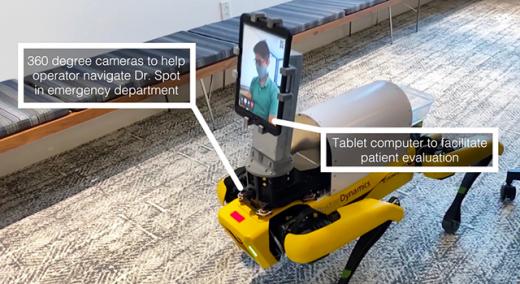In the era of social distancing, using robots for some healthcare interactions is a promising way to reduce in-person contact between healthcare workers and sick patients. However, a key question that needs to be answered is how patients will react to a robot entering the exam room.
|
ADVERTISEMENT |
Researchers from MIT and Brigham and Women’s Hospital recently set out to answer that question. In a study performed in the emergency department at Brigham and Women’s, the team found that a large majority of patients reported that interacting with a healthcare provider via a video screen mounted on a robot was similar to an in-person interaction with a healthcare worker.
“We’re actively working on robots that can help provide care to maximize the safety of both the patient and the healthcare workforce,” says Giovanni Traverso, an MIT assistant professor of mechanical engineering, a gastroenterologist at Brigham and Women’s Hospital, and the senior author of the study. “The results of this study give us some confidence that people are ready and willing to engage with us on those fronts.”
…

Add new comment